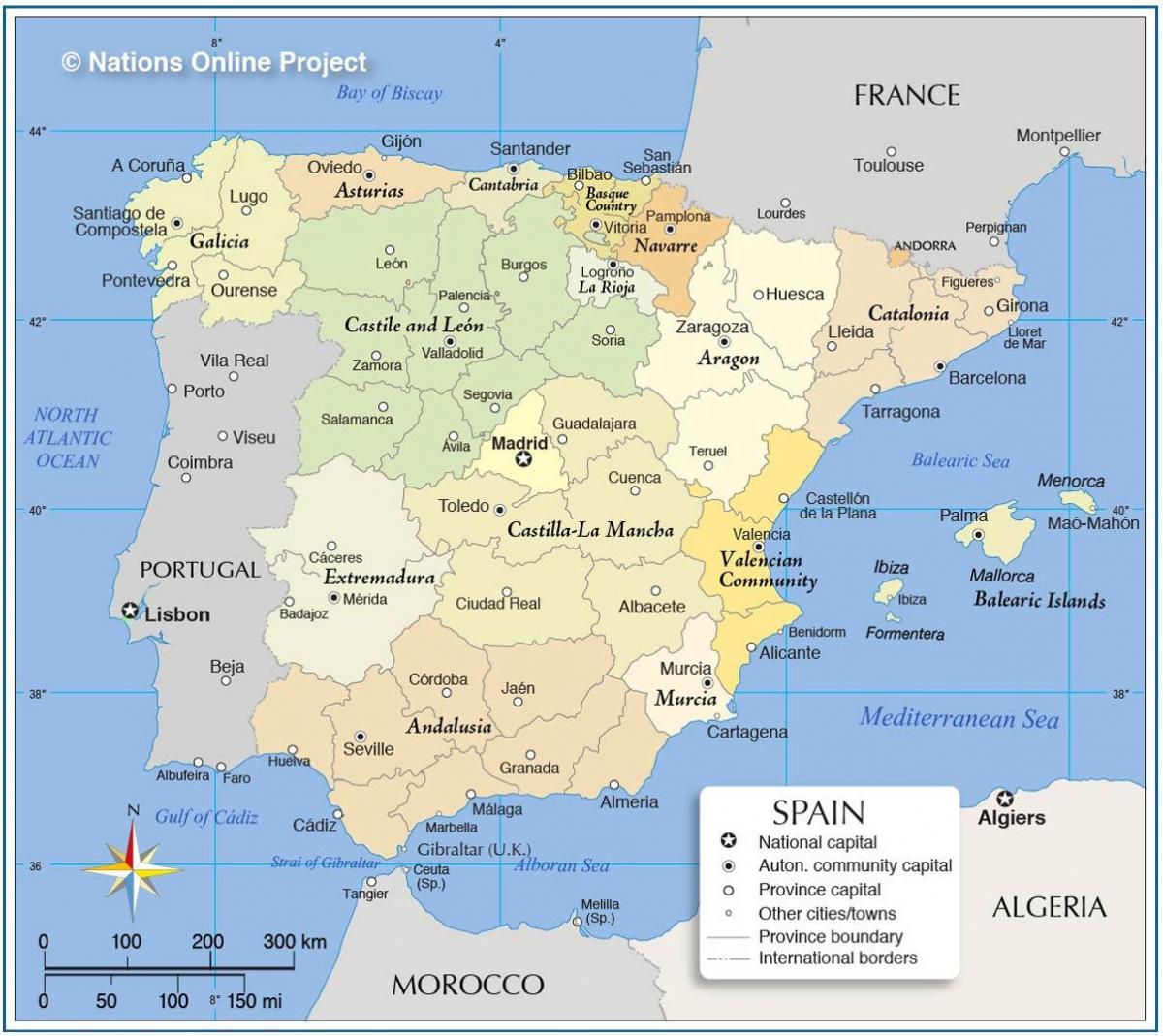search
Political map of Spain
Map of Spain political. Political map of Spain (Southern Europe - Europe) to print. Political map of Spain (Southern Europe - Europe) to download. The politics of Spain take place under the framework established by the constitution of 1978 as its shown in the political map of Spain. Spain is established as a social and democratic state, wherein the national sovereignty is vested in the Spanish People, from which the powers of the State emanate. The political form of government of Spain is a parliamentary monarchy, that is, a social representative, democratic, constitutional monarchy in which the Monarch is the head of state and the Prime Minister — whose official title is "president of the Government" — is the head of government.
Spain political system is a multi-party system, but since the 1990s, two parties have been predominant in politics, the Spanish Socialist Workers Party (PSOE) and the People Party as its mentioned in the political map of Spain. Regional parties, mainly the Basque Nationalist Party (EAJ-PNV) from the Basque Country, and Convergence and Union (CiU) and the Socialists Party of Catalonia (PSC) from Catalonia, have also played key roles in Spanish politics. Members of the Congress of Deputies are selected through proportional representation, and the Executive Government is to be formed by the party or coalition that has the confidence of the Congress, usually the party with the largest number of seats.
Spain has a multi-party political system at both the national and regional level. Nationally there are two dominant political parties, (the left-leaning PSOE and right-wing PP) which make it extremely difficult for any other formation or coalition to achieve an electoral majority in the bicameral Cortes Generales (consisting of both the national Congress of Deputies and regional representation in the Senate) as you can see in the political map of Spain. Regional parties can be strong in autonomous communities like Catalonia and the Basque Country and are often essential for national government coalitions.
The Law of Political Parties of 1978 provides them with public funding whose quantity is based on the number of seats held in the Cortes Generales and the number of votes received. Since the mid 1980s two parties dominate the national political landscape in Spain as its shown in the political map of Spain: the Spanish Socialist Workers Party (Spanish: Partido Socialista Obrero Español) and the People Party (Spanish: Partido Popular). The Spanish Socialist Workers Party (PSOE) is a social-democrat center-left political party. It was founded in 1879 by Pablo Iglesias, at the beginning as a Marxist party for the workers class, which later evolved towards social-democracy. Outlawed during Franco dictatorship, it gained recognition during Spanish transition to democracy, period when it officially renounced Marxism, under the leadership of Felipe González.


